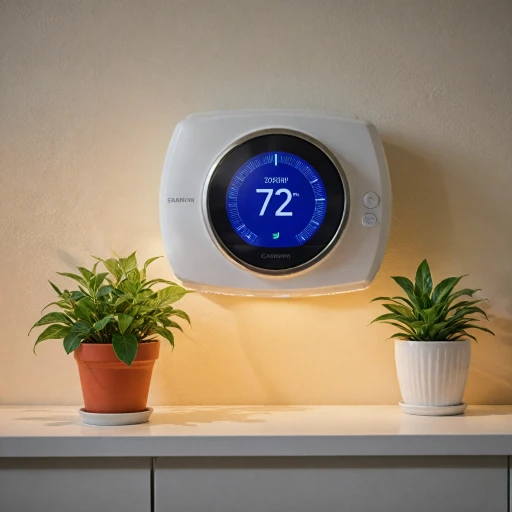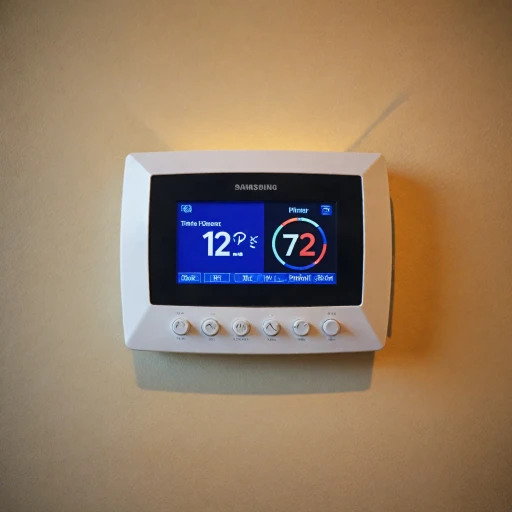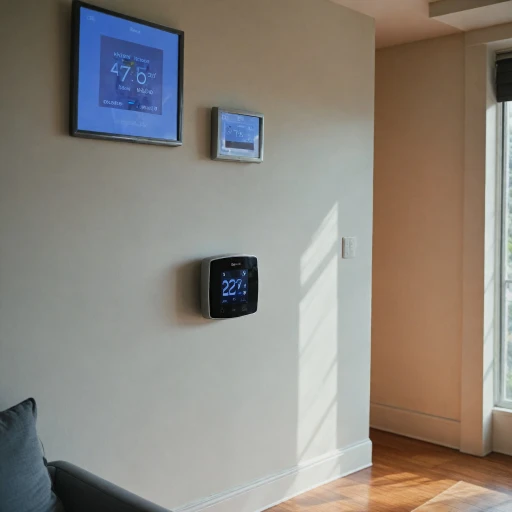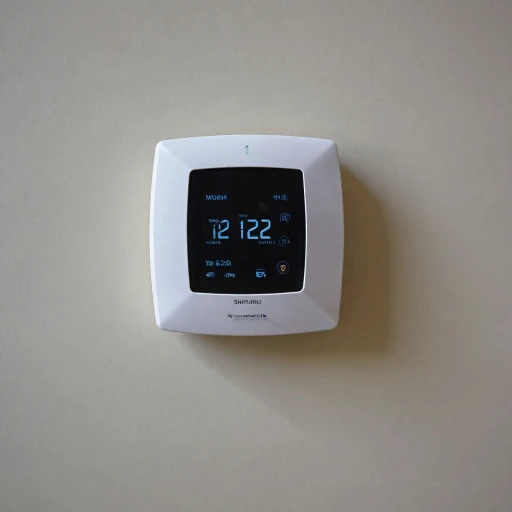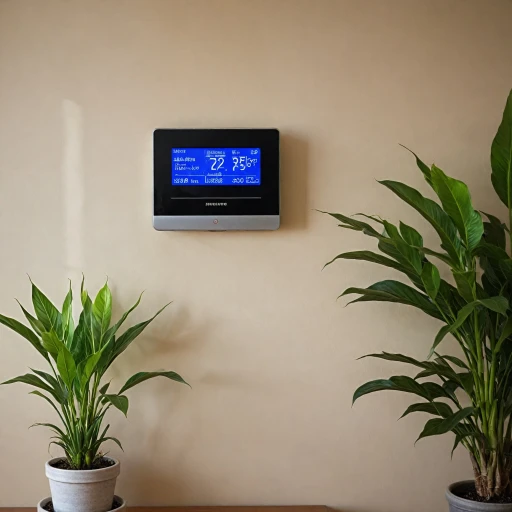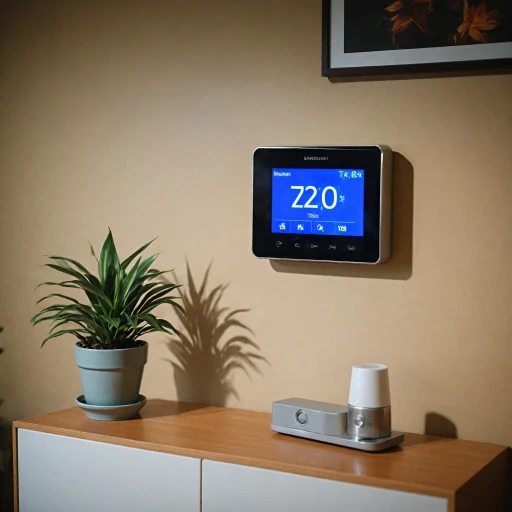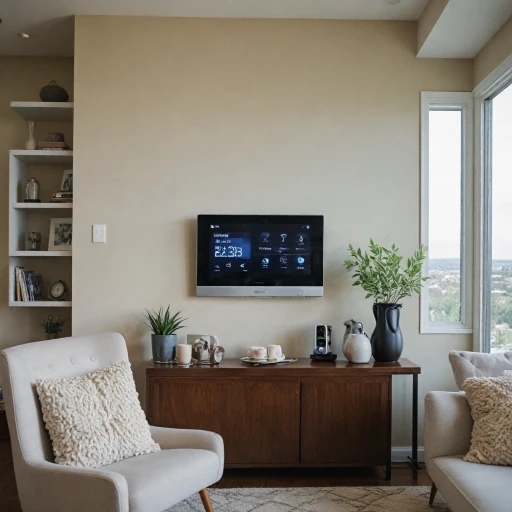
Understanding Thermostatic Remote Control
Getting to Know the Thermostatic Remote Functionality
With the advent of smart homes, thermostatic remote control has become a revolutionary feature that offers more than just convenience. It brings precision in temperature management, making it a game-changer for those who wish to enhance their living environment's comfort.
Understanding how thermostatic remote functions can offer an informative edge for anyone looking to incorporate this technology into their home. Unlike traditional thermostats, these devices offer a variety of control options like adjusting fireplace settings, managing gas logs, or even controlling stove parts from afar.
Moreover, remote controls play a significant role. Whether it’s adjusting the temperature from your couch using a hand-held remote or programming settings through an app, these tools make temperature management a breeze. This ease of use has made thermostatic remotes a wishlist item for many, especially those looking for efficient fireplace remote solutions.
Price also factors into understanding thermostatic remote functionality. Many consumers can find options at varying price points—from a regular price to special offers—allowing flexibility in purchasing decisions while still gaining these advanced features.
For those keen on exploring further, you can learn more about the enhanced comfort offered by remote-sensing thermostats, which extends the capabilities of thermostatic remotes.
Benefits of Using a Thermostatic Remote
Multiple Benefits Beyond Temperature Control
The use of a thermostatic remote offers homeowners an array of benefits beyond just maintaining a comfortable temperature. These devices reimagine convenience, efficiency, and energy savings in a way that traditional thermostats simply cannot match.- Energy Efficiency and Cost Savings: A smart thermostat provides options such as programming temperature settings according to your daily schedule or reducing heating and cooling while you're away. Such features help cut down on energy consumption, and over time, this results in significant cost savings. Many users find that the investment pays for itself through the savings in energy bills.
- Enhanced Comfort: The ability to control your gas stove or fireplace with precision transforms the way people interact with their heating solutions. For example, a thermostatic remote can be used to adjust the heat settings of a fireplace insert or stove parts without the need to manually change settings physically at the device. This ensures that your spaces are always at the ideal temperature, tailored to personal comfort preferences.
- Convenience and Accessibility: With the advancement of mobile applications and handheld devices, you can now adjust your thermostat set points from anywhere, providing a level of convenience that easily fits into modern lifestyles. This integration means you can control the temperature of your home on-the-go, be it adjusting your fireplace remote for cooler evenings or setting your stove's millivolt system before arriving home.
- Versatile Integration: A remote control thermostat with a receiver for gas logs can be seamlessly integrated into existing systems, including gas fireplaces and fire pits. This ensures that users can adapt the technology without needing to overhaul or replace current systems completely. The Skytech thermostat fireplace remote, for example, is designed for versatile compatibility with various gas products.
Challenges in Implementing Smart Thermostats
Overcoming Obstacles in Smart Thermostat Implementation
Integrating smart thermostats into a home's existing system can come with its own set of challenges. While the benefits, such as convenience and energy savings, are enticing, understanding potential hurdles is crucial. Firstly, compatibility issues can arise when trying to incorporate a smart thermostat with the current HVAC system. Many traditional HVAC systems use millivolt controls, which may not readily support advanced smart thermostat technology without additional components. It's essential to determine if the current system is compatible or if additional stove parts, such as a millivolt receiver, are needed. Moreover, there's the aspect of understanding the full range of features offered by various products. Different smart thermostats, from brands like Skytech, come with distinct functionalities, including thermostatic remotes, fireplace control, and even remote control for gas fireplaces. It's crucial to assess which features align with your specific needs, whether it be for regular heating, managing gas logs, or controlling fire pits remotely. Price considerations are also paramount, as smart thermostats can range significantly in cost. While some consumers may look for a special price or wishlist options, others might prioritize shipping speed. Evaluating the price regular against the extra functionalities can help make a well-informed decision. Lastly, the user experience of installing and using smart thermostats can vary. A smooth installation will depend on the availability of clear instructions and reliable customer support for any problem-solving needs. Considering tutorials or guides, like those on Smart Thermostat Guru optimizing home comfort with a humidity thermostat controller, can help in navigating complex features and ensuring an effective setup. Smart thermostats hold significant promise in enhancing comfort and efficiency. However, overcoming these challenges with thoughtful planning and consideration can lead to an optimized home environment.Comparing Popular Smart Thermostats
Spotlight on Smart Thermostats: Which One Stands Out?
When it comes to selecting a smart thermostat that suits your specific needs, an examination of the most popular products on the market can be invaluable. These devices vary widely in features and price, providing options for different preferences and requirements. Here’s a closer look at some renowned brands and models.- Skytech Thermostats: Known for their reliable receivers and handheld remotes, Skytech offers various models that cater to gas fireplaces and stoves. Their thermostats are particularly suitable for users interested in millivolt systems and those who require a device capable of handling specific temperature control settings. They also provide the option to insert fire logs and manage stove parts efficiently.
- Traditional Thermostatic Remotes: These generally include both a thermostat and a remote to control temperature with minimal effort. These models are perfect for those who value simplicity and effectiveness. Their design ensures that every part works seamlessly to adjust the temperature in home fireplaces or gas fireplace setups.
- Advanced Receivers: Some brands focus heavily on the receiver technology within the thermostats. These models often come with enhanced temperature sensors, enabling them to adjust the fireplace insert according to specific temperature needs, ensuring optimal comfort.
- User-Friendly Interfaces: Several products emphasize ease-of-use with intuitive interfaces, and a regular inclusion of Wi-Fi capabilities allows for convenient remote control. This feature appeals to consumers interested in a seamless integration with their home’s smart systems.
Future Trends in Thermostatic Remote Technology
Exploring the Evolution of Thermostatic Remote Technologies
As smart home technology continues to evolve, so does the innovation in thermostatic remote systems. These devices have transformed how we manage temperature control in our homes, offering enhanced convenience and efficiency. Here’s a look at some of the trends that are reshaping the way we think about thermostatic remote technology.
The first major trend is the integration with voice control systems. Devices like the thermostatic remote can now be linked to popular voice assistants, allowing users to adjust the temperature in their homes through simple voice commands. This is particularly beneficial for controlling gas fireplace settings, especially when your hands are full or you're in another room.
Another trend is the increased adoption of energy-saving features. Modern thermostatic remotes are not just about convenience, but they also contribute significantly to reducing energy bills. Many come equipped with sensors that detect when a room is occupied, automatically adjusting the temperature to save energy when no one is around – a feature that's becoming more standard with products from brands like Skytech.
Connectivity and integration with other smart home devices have become a priority. For instance, thermostatic remote systems can be integrated with smart speakers, lighting systems, and even smart TVs. This means that your entire home environment can be managed seamlessly from one central hub, or even from your phone when you're on the go.
Additionally, there’s a push towards improving user interfaces. Remote controls and their corresponding apps are being designed to be more intuitive, making it easier for users to manage intricate settings without hassle. This includes managing multiple fireplaces or stoves from a single device, thanks to innovations in thermostatic receiver technology.
Lastly, the customization of remote controls is on the rise. Many consumers can now find products that allow them to adjust settings such as temperature limits, or create personalized schedules that align with their daily routines. This level of customization ensures that your home environment is always tailored to your specific needs, whether it’s managing gas logs in your fireplace or optimizing temperature for fire pits.
The future of thermostatic remote technology is bright, with ongoing innovations pointing towards even greater convenience and efficiency. Whether you're considering adding a fireplace remote to your wishlist, or you're looking at a regular price or special offer, staying informed about these trends can help you make a more educated decision when purchasing thermostatic products.
Tips for Choosing the Right Smart Thermostat
Key Considerations for Selecting a Smart Thermostat
Choosing the right smart thermostat can significantly enhance the comfort levels in your living space by effectively managing the temperature. As various options flood the market, making a meticulous selection is imperative. Here are some considerations to guide your decision-making process:- Compatibility: Ensure that the thermostat is compatible with your heating and cooling systems. Whether it's a gas fireplace, stove, or millivolt system, compatibility plays a crucial role. It's also essential to check if your new thermostat will work with existing setups like hand-held remote controls or fireplace remotes.
- Functionality: Evaluate the specific features offered by the thermostat. Some models come with a remote control for added convenience, allowing you to adjust the temperature from afar. Look for thermostatic remote features that facilitate seamless integration with diverse parts like a remote receiver, contributing to the overall control of your fireplace or stove settings.
- Price: Consider your budget. While comparing regular prices, special prices, and any price discounts available—such as those on a wishlist—can be beneficial, always weigh the cost against the features on offer. Prices may vary based on brand recognition and advanced functionalities like those provided by reputable brands like Skytech.
- Ease of Installation and Use: Choose a thermostat that offers straightforward installation with clear instructions. This can be especially important when dealing with complex systems like gas logs or fire pits. User-friendliness should be prioritized to ensure you don't need extensive technical know-how just to operate basic functions.
- Shipping and Warranty: Look into the delivery options and check if there are any additional shipping costs. Also, verify the manufacturer's warranty policies to protect your investment against defects or performance issues after purchase. Many consumers review these details to avoid unexpected expenditures post-transaction.
- Reviews and Recommendations: Read product reviews and testimonials for insights into real-world performance and reliability. These evaluations can help identify potential issues and reinforce confidence in your purchase decision.

